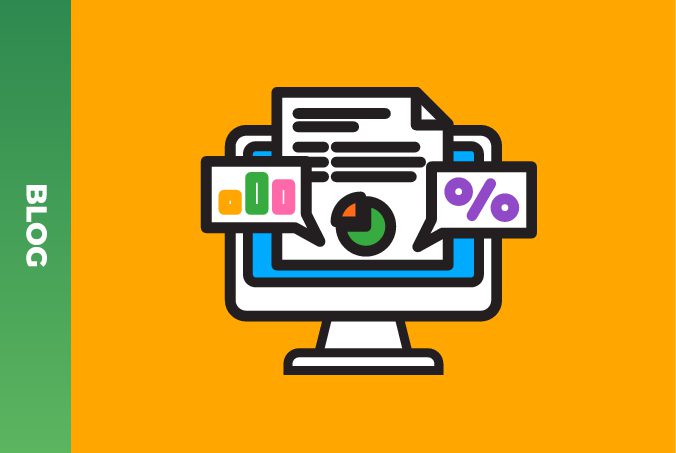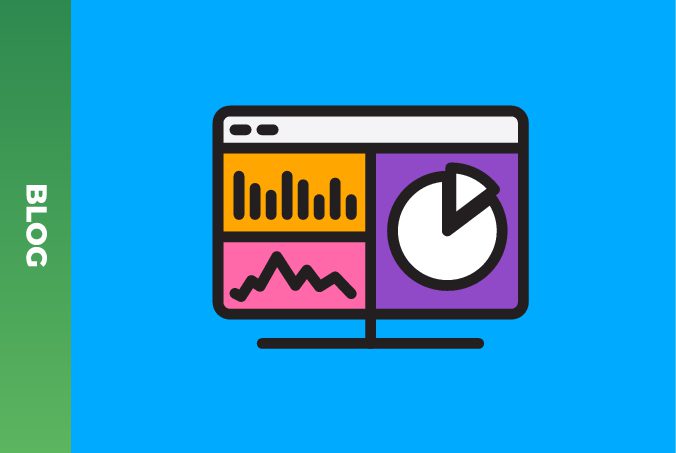Addressing data cleansing challenges with professional services

What if we say that cleansing data is just as important as keeping a house clean? In a tidy house, you know where each item is. Much like with data, high-quality data in its right place is capable of providing benefits and, ultimately, being refined into dollars. Otherwise, poor data might harm your business, resulting in loss of profits or even direct losses.
Some interesting figures: According to IBM’s survey, the average financial impact of poor data on businesses is $ 9.7 million. Another source says the cost of bad data is an astonishing 15% to 25% of revenue for most companies.
So, big data can be a big cost for you if it is low-quality. However, making data right can take 60 or even 80% of your data analysis and insight extraction efforts. It might seem too long. It does. And it’s not the only challenge of data cleansing.
An obvious question arises, what are you supposed to do in this situation? The way out is to use data preparation tools or data cleansing services from professionals. Here, you will learn more about data cleansing and how to overcome its challenges.
Get data cleaning services to benefit your business
What is the purpose of data cleaning services?
Before we discuss data cleaning challenges and solutions, let’s have a couple of words about why we need it. The purpose of data cleaning services, also known as data cleansing or data scrubbing services, is to improve the quality, accuracy, and consistency of data within a dataset or database.
Data cleaning involves identifying and correcting errors, inconsistencies, and inaccuracies in the data to ensure its reliability and usability for analysis, reporting, and decision-making purposes. The primary objectives of data cleaning are:
- Ensuring accuracy: Data cleaning helps to identify and correct errors such as typos, missing values, and incorrect entries, ensuring that the data accurately reflects the real-world entities or phenomena it represents.
- Enhancing consistency: Data cleaning helps to standardize formats, units, and values within the dataset, ensuring consistency across different data sources or variables and making it easier to compare and analyze data.
- Improving completeness: Data cleaning helps to identify and fill in missing values or incomplete records, ensuring that the dataset contains all necessary information for analysis and decision-making.
- Removing duplicates: Data cleaning identifies and removes duplicate records or entries within the dataset, reducing redundancy and ensuring that each observation is unique and meaningful.
- Validating integrity: Data cleaning verifies the integrity and validity of data by checking for outliers, anomalies, or inconsistencies that may indicate errors or data quality issues, which helps maintain the reliability of data for decision-making and compliance purposes.
- Supporting data governance: It contributes to effective data governance by establishing and enforcing standards and procedures for data quality management. It ensures that data meets regulatory requirements, enhancing accountability and compliance within the organization.
- Facilitating data analysis: Clean data serves as a solid foundation for accurate and valuable data analysis, reporting, and visualization. By ensuring that data is clean, organizations can derive actionable insights, identify trends, and make data-driven decisions with confidence.

The importance of database cleaning services is so evident
Otherwise, by not preparing your data, it will not properly work for you, which might entail:
- inaccurate decision-making;
- wasted resources;
- compliance risks;
- operational inefficiencies;
- missed opportunities;
- difficulty in performance measurement;
- loss of competitive advantage;
- damage to reputation, and as stated before;
- ldamage to reputation, and as staost revenue or even losses.
What are common data cleansing service challenges?
Despite its importance, data cleansing poses several challenges for organizations, including:
- Volume of data: businesses generate vast amounts of data from various sources, including internal systems, third-party vendors, and online platforms. Managing and cleansing this data manually can be a daunting task, especially for large enterprises with complex datasets.
- Complexity of data sources: data comes in various formats, structures, and languages, making it challenging to standardize and cleanse effectively. It also extends to disparate systems and platforms, further complicating the standardization and cleansing process.
- Data quality issues: Inaccuracies, inconsistencies, duplicates, missing values, and outliers abound within datasets and demand thorough identification and correction processes to ensure reliable data.
- Data integration issues: Combining data from diverse sources often leads to compatibility challenges, requiring alignment of formats, standards, and semantics to enable effective integration and analysis.
- Time-consuming efforts: Manual data cleansing processes can consume significant time and resources, particularly when dealing with large datasets, hindering operational efficiency and delaying insights.
- Automation limitations: While automation tools can aid in data cleansing, they may not capture all errors, especially those requiring contextual understanding or human judgment, necessitating supplementary manual intervention.
- Continuous maintenance: Data quality deteriorates over time due to evolving business processes, technological advancements, and changing data sources, necessitating ongoing monitoring, updates, and maintenance efforts to sustain data integrity.

Data cleansing best practices
Based on the aforesaid data cleansing challenges, let’s see how they can be overcome.
Data volume challenge:
- Implement automated data cleaning tools and platforms capable of handling large volumes of data efficiently.
- Utilize distributed computing frameworks such as Hadoop or Spark to parallelize data cleaning tasks, enabling faster processing of large datasets.
- Prioritize data based on relevance and impact, focusing cleaning efforts on critical datasets first.
Data source complexity challenge:
- Invest in data integration and ETL (Extract, Transform, Load) tools that support a wide range of data formats and structures.
- Simplify complex data structures and formats by presenting them in a more understandable and intuitive manner with visualization tips and tools.
- Develop data pipelines and workflows to standardize data as it enters the system, reducing the complexity of downstream cleaning tasks.
- Leverage natural language processing (NLP) and machine learning techniques to process unstructured data and extract meaningful information.
Data quality issues:
- Establish data quality standards and protocols to guide the cleaning process, including rules for identifying and addressing inaccuracies, inconsistencies, duplicates, and missing values.
- Use data profiling and quality assessment tools to identify potential issues within datasets proactively.
- Implement data validation checks and constraints at the point of data entry to prevent the introduction of erroneous data.
Data integration challenge:
- Use data integration tips and develop data governance policies and standards to ensure consistency and compatibility across diverse data sources.
- Use data mapping and transformation techniques to align data formats, standards, and semantics during the integration process.
- Employ master data management (MDM) solutions to create a single, authoritative source of truth for key data entities, facilitating integration and analysis.
Time-consuming effort challenge:
- Automate repetitive and time-consuming data-cleaning tasks using scripting languages, workflow automation tools, or custom software solutions.
- Prioritize the use of scalable and parallelizable algorithms to expedite the cleaning process for large datasets.
- Invest in training and upskilling personnel to improve efficiency and effectiveness in data cleaning tasks.
Automation limitation challenge:
- Combine automated data cleaning tools with human oversight and intervention to address errors that require contextual understanding or judgment.
- Implement exception-handling mechanisms to flag and route complex or ambiguous cases to human reviewers for resolution.
- Continuously refine and update automated cleaning algorithms based on feedback and learning from past cleaning activities.
Continuous maintenance challenge:
- Establish data quality monitoring processes to track changes in data quality over time and detect emerging issues.
- Implement data governance frameworks to ensure ongoing compliance with quality standards and regulatory requirements.
- Regularly review and update data cleaning procedures in response to evolving business processes, technological advancements, and changing data sources.
Values of database cleansing services
By implementing data cleansing services and addressing its challenges, the following opens before you:
- Improved data quality: Database cleansing services help ensure that data is accurate, consistent, and complete. By identifying and correcting errors, inconsistencies, duplicates, and missing values, you can trust the integrity of your data for decision-making and analysis.
- Strategic insights: Clean data serves as a foundation for meaningful analysis and strategic insights. By investing in database cleansing services, you can unlock the full potential of your data, uncovering valuable insights that drive innovation, growth, and competitive advantage.
- Enhanced decision-making: Clean and reliable data enables better decision-making across all levels of an organization. By providing accurate insights and eliminating noise or bias in the data, database cleansing services empower businesses to make informed decisions that drive growth and efficiency.
- Increased operational efficiency: By automating and streamlining data cleansing processes, you can save time and resources previously spent on manual data validation and correction. This leads to increased operational efficiency and productivity across the organization.
- Compliance and risk mitigation: Database cleansing services help ensure that data complies with industry regulations and standards, reducing the risk of regulatory fines or penalties. By maintaining accurate and up-to-date data, you can also mitigate risks associated with erroneous or incomplete information.
- Improved customer experience: Clean and accurate customer data is essential for providing personalized and targeted experiences. Database cleansing services help organizations maintain high-quality customer data, leading to improved customer satisfaction, loyalty, and retention.
- Cost savings: By identifying and eliminating redundant or obsolete data, database cleansing services can help organizations reduce storage costs associated with maintaining large databases. Additionally, by preventing errors and inaccuracies early in the data lifecycle, organizations can avoid costly downstream impacts on operations and decision-making.

Conclusion: outsource data cleansing services or ask a data cleaning specialist for help right away
To wrap things up, professional data cleansing services offer expertise, tools, and strategies to identify, rectify, and prevent data inconsistencies, errors, and redundancies, empowering businesses to leverage accurate and reliable data for informed decision-making, smooth operations, and sustainable growth.
Don’t let poor, dirty, and bad data hold you back—embrace the power of b2b data cleansing to propel your business forward. Invest in b2b data cleansing services today to ensure your data remains a valuable asset.





